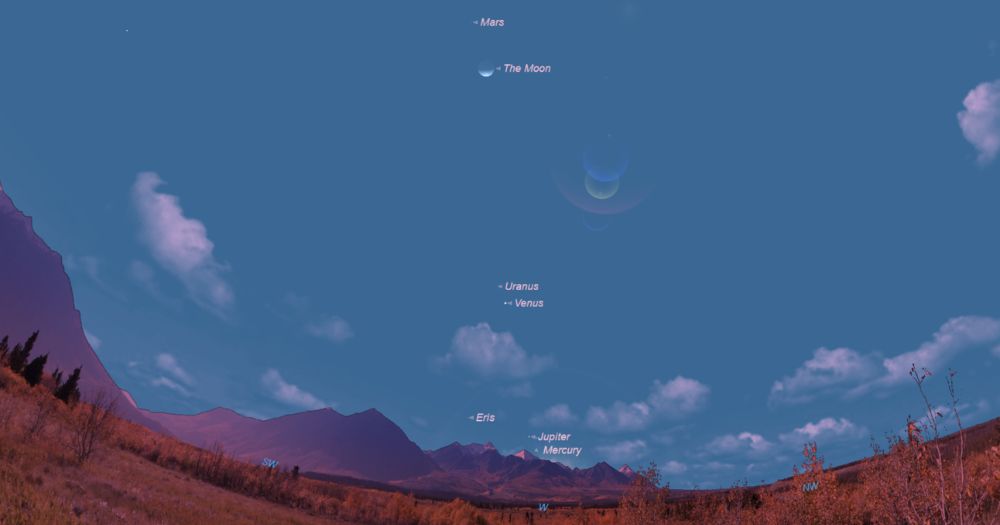Follow us on Telegram for the latest updates: https://t.me/mothershipsg
If you missed your chance to see Venus at the tip of the crescent moon on Mar. 24, keep your eyes peeled for the sky on Mar. 28.
Five planets -- Mercury, Venus, Mars, Jupiter, Uranus -- will be aligned in the sky, in addition to the crescent moon.
How to catch it
The sight should be visible after sunset in the west, reported the BBC.
In Singapore, the sun will set at 7:13pm, according to the Time and Date website.
The two planets lowest in the skies, Mercury and Jupiter, will set beyond the horizon at 7:53pm, so there is only a short 40-minute window where the entire display is visible.
The best place to see it is somewhere with an unobstructed view of the sky, away from city lights.
What to look out for
It might be difficult to see all the planets with the naked eye.
Near the horizon, the smallest and largest planets, Jupiter and Mercury, are right next to each other.
Jupiter is just to the left of Mercury. It will be easier to spot in the evening twilight as it is twice as bright.
Space.com recommends waiting 20 to 25 minutes after the sunset before sweeping the western horizon with a pair of binoculars.
Above them is Venus, which is one of the brightest objects in the sky that can be spotted quite easily.
Uranus is the hardest planet to spot from Earth. It is upper left of Venus and has a pale greenish tint.
Finally, upper left of the moon, the bright yellow-orange spot is Mars.
One more bonus sighting: With a pair of binoculars, you can also find the star cluster M35, located in the constellation of Gemini, just left of Mars.
A planetary parade
The phenomenon is known as "a planetary parade".
From Earth's perspective, it is a special treat to see so many of the Solar System's planets together in the night sky, even though they are millions of kilometres away from one another.
These "conjunctions" -- astronomical objects appearing close together in the sky -- happen from time to time.
In June 2022, five different planets were also lined up in a row.
Top image via Space.com.
If you like what you read, follow us on Facebook, Instagram, Twitter and Telegram to get the latest updates.
